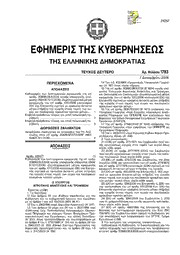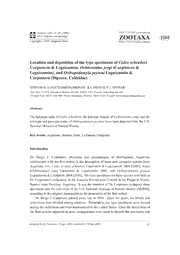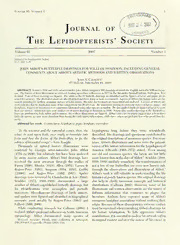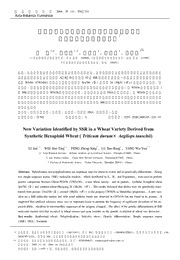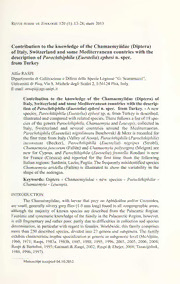
Preview On Lisp
i titlepage ii copyrightpage Tomyfamily,andtoJackie. iv λ Preface ThisbookisintendedforanyonewhowantstobecomeabetterLispprogrammer. ItassumessomefamiliaritywithLisp,butnotnecessarilyextensiveprogramming experience. Thefirst few chapterscontaina fair amountof review. I hopethat thesesectionswillbeinterestingtomoreexperiencedLispprogrammersaswell, becausetheypresentfamiliarsubjectsinanewlight. It’sdifficulttoconveytheessenceofaprogramminglanguageinonesentence, butJohnFoderarohascomeclose: Lispisaprogrammableprogramminglanguage. There is more to Lisp than this, but the ability to bend Lisp to one’s will is a largepartofwhatdistinguishesaLispexpertfromanovice. Aswellaswriting theirprogramsdowntowardthelanguage,experiencedLispprogrammersbuild thelanguageuptowardtheirprograms. Thisbookteacheshowtoprograminthe bottom-upstyleforwhichLispisinherentlywell-suited. Bottom-up Design Bottom-updesignisbecomingmoreimportantassoftwaregrowsincomplexity. Programstodaymay haveto meet specificationswhich are extremelycomplex, orevenopen-ended. Undersuchcircumstances,thetraditionaltop-downmethod sometimes breaksdown. In its place therehas evolveda style of programming v vi PREFACE quite differentfromwhat is currentlytaughtin most computerscience courses: a bottom-upstyle in which a programis written as a series of layers, each one actingasasortofprogramminglanguagefortheoneabove. XWindowsandTEX areexamplesofprogramswritteninthisstyle. Thethemeofthisbookistwofold: thatLispisanaturallanguageforprograms written in the bottom-upstyle, and that the bottom-upstyle is a natural way to writeLisp programs. OnLisp will thusbeofinterestto twoclasses ofreaders. For people interested in writing extensibleprograms, this bookwill show what youcandoifyouhavetherightlanguage. ForLispprogrammers,thisbookoffers apracticalexplanationofhowtouseLisptoitsbestadvantage. The title is intended to stress the importanceof bottom-upprogrammingin Lisp. Instead of just writing your program in Lisp, you can write your own languageonLisp,andwriteyourprograminthat. It is possible to write programs bottom-upin any language, but Lisp is the mostnaturalvehicleforthisstyleofprogramming. InLisp,bottom-updesignis not a special techniquereservedfor unusuallylargeor difficult programs. Any substantialprogramwillbewrittenpartlyinthisstyle. Lispwasmeantfromthe start tobean extensiblelanguage. Thelanguageitself is mostlya collectionof Lispfunctions,nodifferentfromtheonesyoudefineyourself. What’smore,Lisp functionscan be expressedas lists, which are Lisp datastructures. This means youcanwriteLispfunctionswhichgenerateLispcode. AgoodLispprogrammermustknowhowtotakeadvantageofthispossibility. Theusualwaytodosoisbydefiningakindofoperatorcalleda macro. Mastering macros is one of the most importantsteps in movingfrom writing correctLisp programsto writing beautiful ones. IntroductoryLisp books have room for no morethanaquickoverviewofmacros:anexplanationofwhatmacrosare,together withafewexampleswhichhintatthestrangeandwonderfulthingsyoucando withthem. Thosestrangeandwonderfulthingswillreceivespecialattentionhere. Oneoftheaimsofthisbookistocollectinoneplaceallthatpeoplehavetillnow hadtolearnfromexperienceaboutmacros. Understandably, introductory Lisp books do not emphasize the differences between Lisp and other languages. They have to get their message across to studentswhohave,forthemostpart,beenschooledtothinkofprogramsinPascal terms. It would only confusematters to explain that, while defun looks like a proceduredefinition,itisactuallyaprogram-writingprogramthatgeneratescode whichbuildsafunctionalobjectandindexesitunderthesymbolgivenasthefirst argument. OneofthepurposesofthisbookistoexplainwhatmakesLispdifferentfrom otherlanguages. WhenIbegan,Iknewthat,allotherthingsbeingequal,Iwould muchratherwriteprogramsinLispthaninCorPascalorFortran. Iknewalsothat thiswasnotmerelyaquestionoftaste. ButIrealizedthatifIwasactuallygoing PREFACE vii toclaimthatLispwasinsomewaysabetterlanguage,Ihadbetterbepreparedto explainwhy. WhensomeoneaskedLouisArmstrongwhatjazzwas,hereplied“Ifyouhave toaskwhatjazzis,you’llneverknow.” Buthedidanswerthequestioninaway: heshowedpeoplewhatjazzwas. That’sonewaytoexplainthepowerofLisp—to demonstratetechniquesthatwouldbedifficultorimpossibleinotherlanguages. Mostbooksonprogramming—evenbooksonLispprogramming—dealwiththe kindsofprogramsyoucouldwriteinanylanguage. OnLisp dealsmostlywith the kinds of programs you could only write in Lisp. Extensibility, bottom-up programming, interactive development, source code transformation, embedded languages—thisiswhereLispshowstoadvantage. Inprinciple,ofcourse,anyTuring-equivalentprogramminglanguagecando the same things as anyother. But that kindof poweris not what programming languages are about. In principle, anything you can do with a programming languageyoucandowithaTuringmachine;inpractice,programmingaTuring machineisnotworththetrouble. So when I say that this book is about how to do things that are impossible inotherlanguages,Idon’tmean“impossible”inthemathematicalsense,butin the sense that matters for programminglanguages. That is, if you had to write someoftheprogramsinthisbookinC,youmightaswelldoitbywritingaLisp compilerinCfirst. EmbeddingProloginC,forexample—canyouimaginethe amountofworkthatwouldtake? Chapter24showshowtodoitin180linesof Lisp. IhopedtodomorethansimplydemonstratethepowerofLisp,though. Ialso wantedtoexplainwhyLispisdifferent. Thisturnsouttobeasubtlequestion—too subtle to be answered with phrases like “symbolic computation.” What I have learnedsofar,IhavetriedtoexplainasclearlyasIcan. PlanoftheBook Sincefunctionsarethe foundationofLispprograms,thebookbeginswith sev- eral chapters on functions. Chapter 2 explains what Lisp functions are and the possibilities they offer. Chapter 3 then discusses the advantages of functional programming,thedominantstyleinLispprograms. Chapter4showshowtouse functionstoextendLisp. ThenChapter5suggeststhenewkindsofabstractions wecandefinewithfunctionsthatreturnotherfunctions. Finally,Chapter6shows howtousefunctionsinplaceoftraditionaldatastructures. Theremainderofthebookdealsmorewith macrosthanfunctions. Macros receivemoreattentionpartlybecausethereismoretosayaboutthem,andpartly becausetheyhavenottillnowbeenadequatelydescribedinprint. Chapters7–10 viii PREFACE formacompletetutorialonmacrotechnique. Bytheendofityouwillknowmost ofwhatanexperiencedLispprogrammerknowsaboutmacros: howtheywork; howtodefine,test,anddebugthem;whentousemacrosandwhennot;themajor typesofmacros;howtowriteprogramswhichgeneratemacroexpansions;how macrostylediffersfromLispstyleingeneral;andhowtodetectandcureeachof theuniqueproblemsthatafflictmacros. Followingthis tutorial, Chapters11–18showsomeofthe powerfulabstrac- tions you can build with macros. Chapter 11 shows how to write the classic macros—thosewhichcreatecontext,orimplementloopsorconditionals. Chap- ter12explainstheroleofmacrosinoperationsongeneralizedvariables. Chap- ter13showshowmacroscanmakeprogramsrunfasterbyshiftingcomputation to compile-time. Chapter 14 introduces anaphoricmacros, which allow you to usepronounsinyourprograms. Chapter15showshowmacrosprovideamore convenient interface to the function-buildersdefined in Chapter 5. Chapter 16 showshowtousemacro-definingmacrostomakeLispwriteyourprogramsfor you. Chapter17discussesread-macros,andChapter18,macrosfordestructuring. With Chapter 19 begins the fourth part of the book, devoted to embedded languages. Chapter 19 introduces the subject by showing the same program, a program to answer queries on a database, implemented first by an interpreter and then as a true embedded language. Chapter 20 shows how to introduce intoCommonLispprogramsthenotionofacontinuation,anobjectrepresenting the remainder of a computation. Continuations are a very powerful tool, and canbe usedto implementbothmultipleprocessesandnondeterministicchoice. Embeddingthese controlstructures in Lisp is discussed in Chapters 21 and22, respectively. Nondeterminism, which allows you to write programs as if they hadforesight,soundslikeanabstractionofunusualpower. Chapters23and24 presenttwoembeddedlanguageswhichshowthatnondeterminismlivesuptoits promise: acompleteATNparserandanembeddedPrologwhichcombinedtotal ◦ about200linesofcode. Thefactthattheseprogramsareshortmeansnothinginitself.Ifyouresortedto writingincomprehensiblecode,there’snotellingwhatyoucoulddoin200lines. Thepointis,theseprogramsarenotshortbecausetheydependonprogramming tricks,butbecausethey’rewrittenusingLispthewayit’smeanttobeused. The pointofChapters23and24is nothowtoimplementATNs inonepageofcode orPrologintwo,buttoshowthattheseprograms,whengiventheirmostnatural Lispimplementation,simplyarethatshort. Theembeddedlanguagesinthelatter chaptersprovideaproofbyexampleofthetwinpointswithwhichIbegan: that Lispis a naturallanguageforbottom-updesign,andthatbottom-updesignis a naturalwaytouseLisp. Thebookconcludeswith a discussionof object-orientedprogramming,and particularly CLOS, the Common Lisp Object System. By saving this topic till PREFACE ix last, we see more clearly the way in which object-oriented programmingis an extensionofideasalreadypresentinLisp. Itisoneofthemanyabstractionsthat canbebuiltonLisp. Achapter’sworthofnotesbeginsonpage387. Thenotescontainreferences, additionaloralternativecode,ordescriptionsofaspectsofLispnotdirectlyrelated tothepointathand. Notesareindicatedbyasmallcircleintheoutsidemargin, likethis. ThereisalsoanAppendix(page381)onpackages. ◦ JustasatourofNewYorkcouldbeatourofmostoftheworld’scultures,a studyofLispastheprogrammableprogramminglanguagedrawsinmostofLisp technique. MostofthetechniquesdescribedherearegenerallyknownintheLisp community,butmanyhavenottillnowbeenwrittendownanywhere. Andsome issues,suchastheproperroleofmacrosorthenatureofvariablecapture,areonly vaguelyunderstoodevenbymanyexperiencedLispprogrammers. Examples Lispisafamilyoflanguages. SinceCommonLisppromisestoremainawidely useddialect,mostoftheexamplesinthisbookareinCommonLisp. Thelanguage wasoriginallydefinedin1984bythepublicationofGuySteele’sCommonLisp: theLanguage(CLTL1). Thisdefinitionwassupersededin1990bythepublication ofthesecondedition(CLTL2),whichwillinturnyieldplacetotheforthcoming ◦ ANSIstandard. Thisbookcontainshundredsofexamples,rangingfromsingleexpressionsto aworkingPrologimplementation. Thecodeinthisbookhas,whereverpossible, beenwrittentoworkinanyversionofCommonLisp. Thosefewexampleswhich needfeaturesnotfoundinCLTL1implementationsareexplicitlyidentifiedinthe text. Later chapters contain some examples in Scheme. These too are clearly identified. ThecodeisavailablebyanonymousFTPfromendor.harvard.edu,where it’s in the directory pub/onlisp. Questions and comments can be sent to onlisp@das.harvard.edu. Acknowledgements WhilewritingthisbookIhavebeenparticularlythankfulforthehelpofRobert Morris. IwenttohimconstantlyforadviceandwasalwaysgladIdid. Several oftheexamplesinthisbookarederivedfromcodeheoriginallywrote,including the version of for on page 127, the version of aand on page 191, match on page239,thebreadth-firsttrue-chooseonpage304,andtheProloginterpreter x PREFACE inSection24.2. Infact,thewholebookreflects(sometimes,indeed,transcribes) conversationsI’vehadwithRobertduringthepastsevenyears. (Thanks,rtm!) IwouldalsoliketogivespecialthankstoDavidMoon,whoreadlargeparts ofthemanuscriptwithgreatcare,andgavemeveryusefulcomments. Chapter12 wascompletelyrewrittenathissuggestion,andtheexampleofvariablecapture onpage119isonethatheprovided. Iwas fortunatetohaveDavidTouretzkyandSkonaBrittainas thetechnical reviewersforthebook. Severalsectionswereaddedorrewrittenattheirsugges- tion. Thealternativetruenondeterministicchoiceoperatoronpage397isbased onasuggestionbyDavidToureztky. Severalotherpeopleconsentedtoreadallorpartofthemanuscript,including Tom Cheatham, Richard Draves (who also rewrote alambda and propmacro back in 1985), John Foderaro, David Hendler, George Luger, Robert Muller, MarkNitzberg,andGuySteele. I’mgratefultoProfessorCheatham,andHarvardgenerally,forprovidingthe facilitiesusedtowritethisbook. ThanksalsotothestaffatAikenLab,including TonyHartman,JanuszJuda,HarryBochner,andJoanneKlys. Thepeopleat PrenticeHall did agreat job. I feelfortunateto haveworked with Alan Apt, a good editor and a good guy. Thanks also to Mona Pompili, ShirleyMichaels,andShirleyMcGuirefortheirorganizationandgoodhumor. TheincomparableGinoLeeoftheBowandArrowPress,Cambridge,didthe cover. Thetreeonthecoveralludesspecificallytothepointmadeonpage27. ThisbookwastypesetusingLATEX,alanguagewrittenbyLeslieLamportatop DonaldKnuth’s TEX, with additionalmacrosby L. A. Carr, Van Jacobson, and Guy Steele. The diagrams were done with Idraw, by John Vlissides and Scott Stanton. The whole was previewedwith Ghostview, by Tim Theisen, which is builtonGhostscript,byL.PeterDeutsch. GaryBisbeeofChironInc.produced thecamera-readycopy. I owe thanks to many others, including Paul Becker, Phil Chapnick, Alice Hartley, Glenn Holloway, Meichun Hsu, Krzysztof Lenk, Arman Maghbouleh, HowardMullings,NancyParmet,RobertPenny,GarySabot,PatrickSlaney,Steve Strassman,DaveWatkins,theWeickers,andBillWoods. Mostofall,I’dliketothankmyparents,fortheirexampleandencouragement; andJackie,whotaughtmewhatImighthavelearnedifIhadlistenedtothem. Ihopereadingthisbookwillbefun. OfallthelanguagesIknow,IlikeLisp the best, simply because it’s the most beautiful. This book is about Lisp at its lispiest. Ihadfunwritingit,andIhopethatcomesthroughinthetext. PaulGraham
The list of books you might like

Do Epic Shit

As Good as Dead

A Thousand Boy Kisses

The Strength In Our Scars

Infinite ergodic index of the ehrenfest wind-tree model

An Introduction to Fully Integrated Mixed Methods Research

West Knits Book Three

Remèdes de nos grand-mères en 150 recettes maison
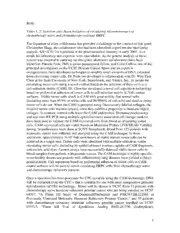
DTIC ADA453368: Gene Expression Analysis of Circulating Hormone Refractory Prostate Cancer
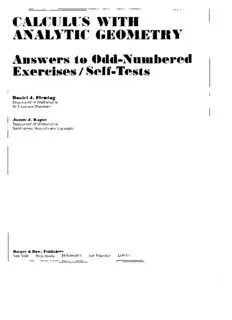
Calculus with analytic geometry
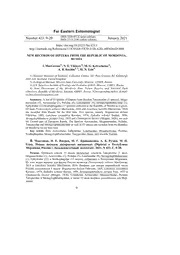
New records of Diptera from the Republic of Mordovia, Russia
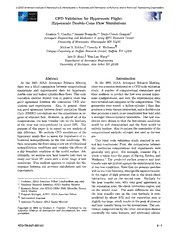
DTIC ADA455442: CFD Validation for Hypersonic Flight: Hypersonic Double-Cone Flow Simulations
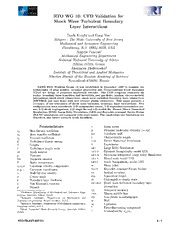
DTIC ADA455440: RTO WG 10: CFD Validation for Shock Wave Turbulent Boundary Layer Interactions

Børns angst for venepunktur
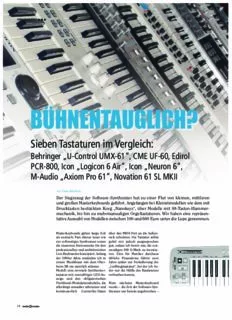
bühnentauglich?
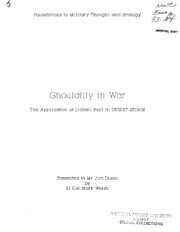
DTIC ADA440730: Ghoulality in War. The Application of Liddell Hart in Desert Storm
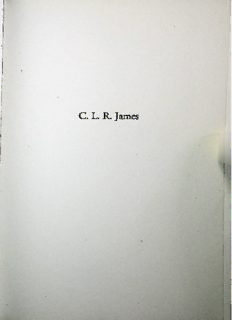
C. L. R. James La vie révolutionnaire d’un "Platon noir"
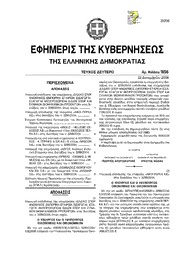
Greek Government Gazette: Part 2, 2006 no. 1856
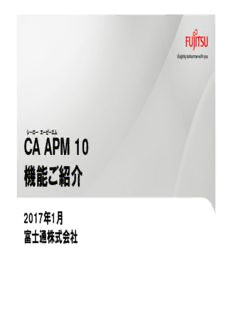
CA APM 10 機能紹介資料
